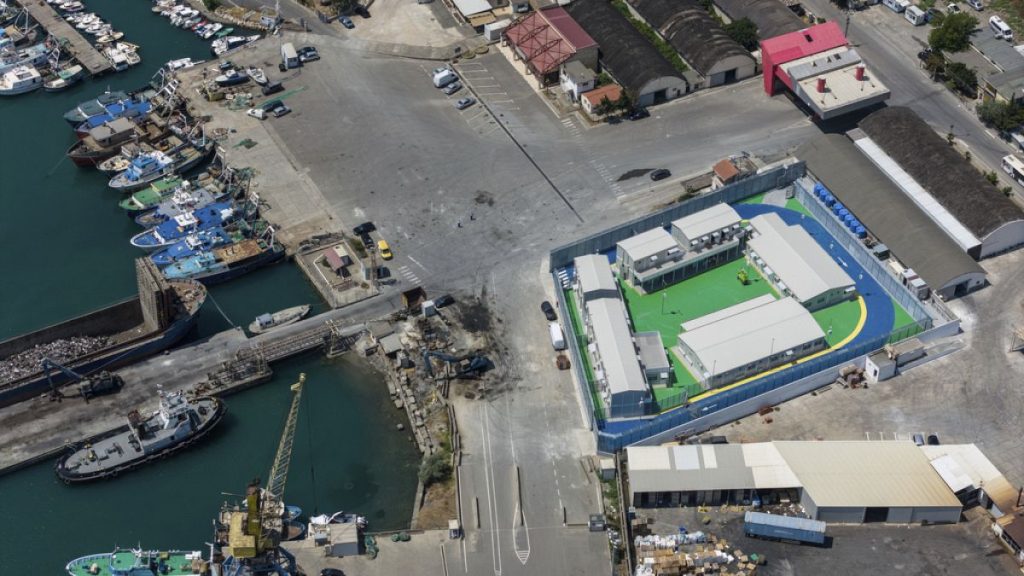The arrival of 49 migrants in Albania aboard an Italian navy vessel marks a renewed attempt by Italy to utilize Albanian processing centers for asylum seekers intercepted in international waters. This initiative, spearheaded by Prime Minister Giorgia Meloni’s government, seeks to address the ongoing influx of migrants attempting to reach Europe through the Mediterranean route. The migrants, primarily from Bangladesh, along with individuals from Egypt, the Ivory Coast, and Gambia, were rescued south of Lampedusa and transported to the Albanian port of Shengjin. Their arrival sets the stage for a potentially contentious legal process, as previous attempts to process migrants in Albania have been challenged in Italian courts.
The core of the legal debate revolves around the safety of the migrants’ countries of origin and the legality of expedited border procedures for those arriving without proper identification. Previous court rulings have deemed certain countries of origin insufficiently safe to warrant the risk of repatriation, effectively blocking the use of Albanian processing centers for those individuals. This latest attempt by the Italian government comes after a December ruling by Italy’s highest court, which seemingly provides more leeway for lower courts to determine the safety of origin countries on a case-by-case basis, without directly contradicting government policy. This legal maneuvering highlights the inherent tension between national immigration policies and international legal standards regarding asylum seekers.
The reactivation of Albanian processing centers forms a key component of Prime Minister Meloni’s immigration policy, aimed at curbing the number of migrants entering Italy. The agreement with Albania allows up to 3,000 migrants intercepted in international waters to be transferred to Albania each month. These individuals will undergo screening procedures to assess their eligibility for asylum in Italy. Those granted asylum will be relocated to Italy, while those whose applications are rejected face deportation directly from Albania. This approach intends to streamline the asylum process and deter further irregular migration by offering a clear path to asylum while also establishing a mechanism for swift repatriation.
The success of this renewed initiative hinges on the interpretation and application of the recent high court ruling. The lower courts now bear the responsibility of determining the safety of individual migrants’ countries of origin, effectively deciding the fate of those seeking refuge. The previous legal challenges underscore the potential for further court battles and delays in the processing of asylum applications. The ongoing legal ambiguity casts a shadow over the long-term viability of the Albanian processing center solution and could potentially lead to further appeals to the European Court of Justice, which has previously ruled against fast-track procedures in cases where the safety of origin countries is questionable.
The arrival of these 49 migrants serves as a test case for the revised approach to migrant processing. The outcome of their asylum applications and the subsequent legal procedures will significantly influence the future of the Italian-Albanian agreement and shape the broader landscape of European migration policy. The delicate balance between national sovereignty, international legal obligations, and humanitarian concerns remains at the heart of this complex issue. The ongoing legal and political wrangling highlights the enduring challenges faced by European nations in addressing the complexities of migration and asylum.
The long-term effectiveness of utilizing Albanian processing centers relies not only on legal clarity but also on the capacity of Albania to manage the influx of migrants and ensure fair and efficient processing of asylum claims. Furthermore, the willingness of other European nations to share the responsibility of accommodating asylum seekers and providing humanitarian assistance remains a crucial factor in addressing the broader migration crisis. The current situation underscores the need for a comprehensive and collaborative European approach to migration, one that respects international law while effectively managing migration flows and providing protection to those in genuine need of refuge.














